When scanning a picture, how to choose the right resolution is an important and confusing problem. Because it is not only related to the original and output requirements, but also directly affect the output effect. The scanning resolution is set low, and the output image accuracy is not ideal. If the setting is high, the effect cannot be displayed, and the scanning and processing time is wasted, and the resulting file is too large, which occupies disk storage space.
So, how do you choose the right resolution when scanning an image? This should be determined based on the original drawing size, the final output method and the comprehensive consideration of the output format.
Show on screen
If you only display images on the screen (for example, electronic photo albums, web page images), they are equivalent because the scanning resolution is directly converted to the display resolution. The screen can only display about 72dpi (dpi is the abbreviation for Dot Per Inch, ie, the number of dots per square inch), so scanning with a resolution of 72dpi can display the original image. Using a higher resolution will only increase the amount of image file data and the display area, and will not increase the clarity of the image displayed on the screen.
Print out with the printer
The scanning resolution is not the same as the resolution of the printer. The screen display size is different from the actual print size. The resolution represented by the color inkjet printer refers to the output accuracy of various colors, and dividing it by the number of colors is its effective accuracy. For a four-color printer with a nominal resolution of 720 or 1400 dpi, the effective resolution is 180 and 350 dpi, respectively. Therefore, when the original print output is large, the scanning resolution only needs to be equal to the effective accuracy of the printer. That is, the scanning resolution = the printer resolution and the number of printer heads.
For color printing
The print resolution, which indicates the printing accuracy, is different from the resolution of the electronic image. It is represented by lpi (Line Per Inch). That is, the number of output lines per inch. The newspaper is about 85 lpi, the color magazine is about 150 lpi, and the fine art books and fine art books may use 300 lpi. When scanning an image for printing, the resolution must be determined according to the precision of the printing. An easy way to set the resolution when the original output is large is to multiply the number of printed lines (lpi) by two. Therefore, the best scanning resolution for newspapers, magazines, and art book printing should be 170, 300, and 600 dpi, respectively.
output method
screen display
color printing
Printing
newspaper
magazine
Album
Resolution selection (dpi)
Original output
72
Printer accuracy
170
300
600
Scale output
72× scaling factor
Printer accuracy ×
Scaling factor
×Scale factor
Description: Scale factor = output size ÷ original image size Printer accuracy = printer resolution ÷ printer head color
Description: Scale factor = output size ÷ original image size Printer accuracy = printer resolution ÷ printer head color
The above is the original large output. To scale the output, you also need to multiply the scaling factor. The scaling factor is equal to the output size and the original size. Therefore, setting the scanning resolution according to the output device is different: for screen display = scaling factor × 72 dpi; for printout = scaling factor × (printer resolution ÷ number of printer heads); for printing = Scale factor x (number of printed lines × 2). From the above calculations, it can be seen that the smaller the original image, the higher the printer resolution and the larger the output width, the higher the required scanning resolution.
The above is the author's experience on how to select a suitable scan resolution for scanning images. I hope to help the scanner users.
Water Curtain fountains generally include a bottom reservoir, a complete set of Water Feature fountain equipment (including: Pump, overflow gutter, water filler, power supply device, line spring conduction plate and underwater lighting) as well as a water tank located at the top, his application direction is more extensive, exhibition hall, exhibition hall, urban planning museum, science and technology museum, museum, commercial street big screen display, and stage, KTV bar, and living room can be used. Water plays a significant role in improving the living quality. Outdoor Fountains,Appropriate waterscape structure can enrich the space environment and adjust the environmental climate to enhance the comfort of living. At the same time, water is the most spiritual and active factor in the ecological environment. The organic integration of water, green plants and sculpture works will make people feel back to nature. In addition, Outdoor Fountains a large area of water can absorb dust in the air and play a role in purifying the air, which is of great benefit to the health of residents. There is a saying that water is gold, with the water curtain will only be the icing on the cake, in the road of business to go more stable, further.
| Name |
Corten Steel Garden Water Feature |
| Material | Corten steel |
| Size | 1200*400*1200mm or customized |
|
Surface |
Pre-rusted |
|
Technology |
Laser cut |
|
Application |
Outdoor |
| Steel thickness | 2 mm |
| Packing |
Pallet |
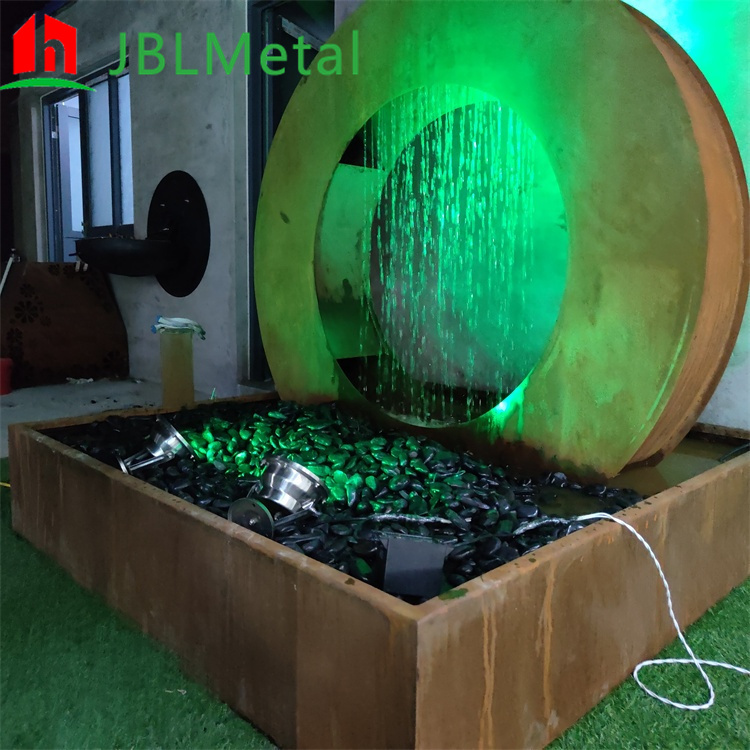
Features:
1. Corten steel – forms a stable, self-protecting rust that requires no painting or maintenance, for a fashionable aesthetic which doesn't compromise structural strength
2. Cascading blade - emits a pleasing sheet of water3. White LED light - built into the cascade, illuminates the feature
4. Suitable for outdoor use
5. Self contained - no need for a continuous water supply
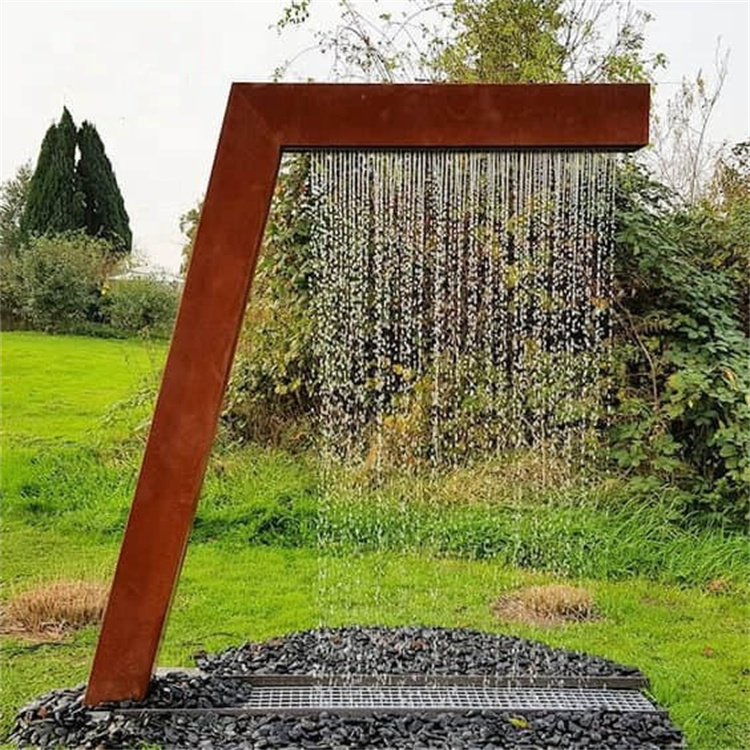
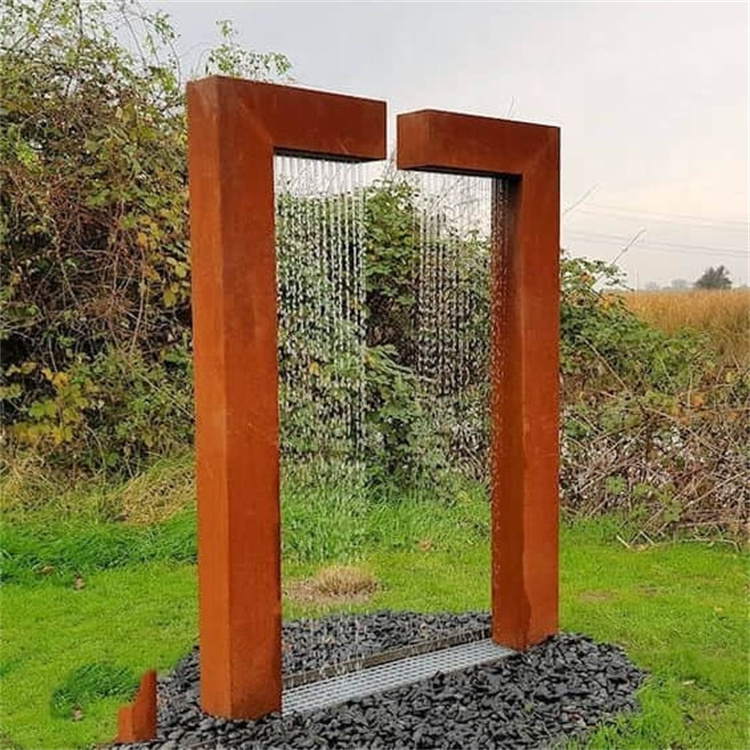
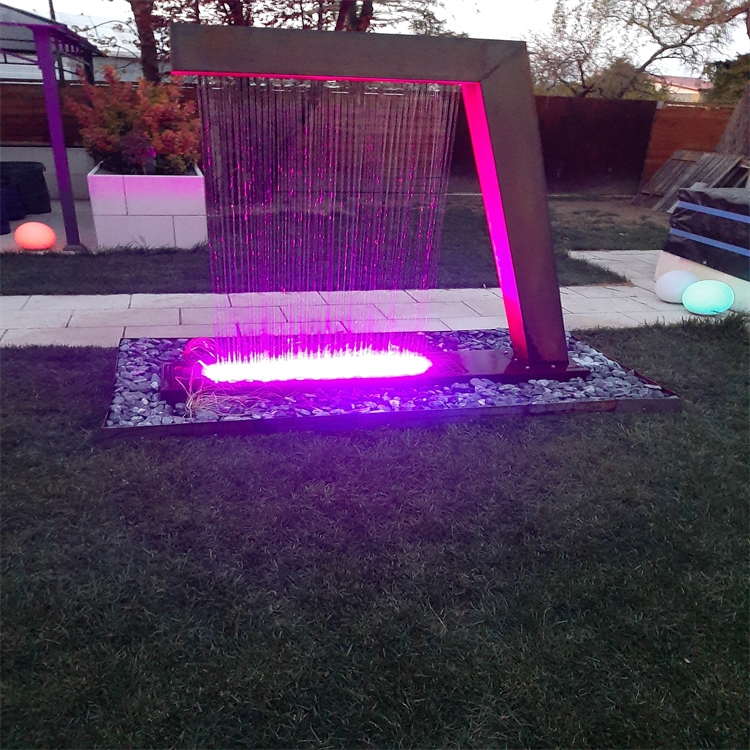
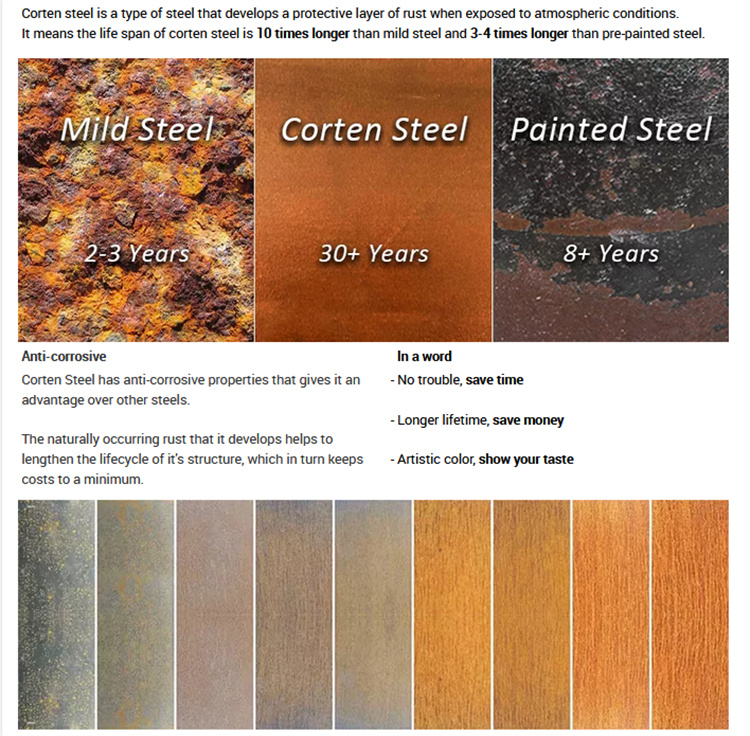
Water Fountain,Outdoor Fountains,Outdoor Fountains,Waterfall Fountain
Henan Jinbailai Industrial Co.,Ltd , https://www.hnjblfirepit.com